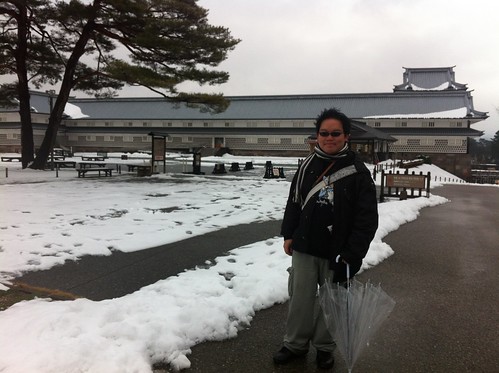
I'll continue chronicling my Kanazawa trip from two weeks ago before it the tiny details slip out of my mind. Some of the anecdotes here were posted on Facebook, but I'll try to expand.
6th of January, 2013. After a nice sleep in my hotel, I checked out, left my luggage at the concierge, hopped onto a bus and went straight to the famous Higashi Chaya District. (Skipping breakfast)
Built during the edo period, this street is a row of tea houses which were frequented by geishas (which are still around, although I didn't see any during the trip. Alas) It was raining, but I didn't care.
I felt as if i have traveled in time.
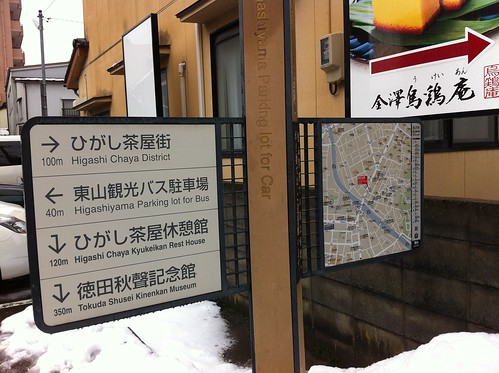
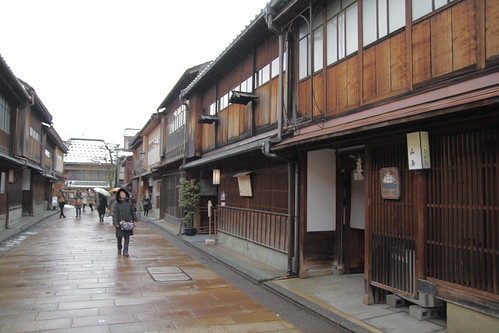

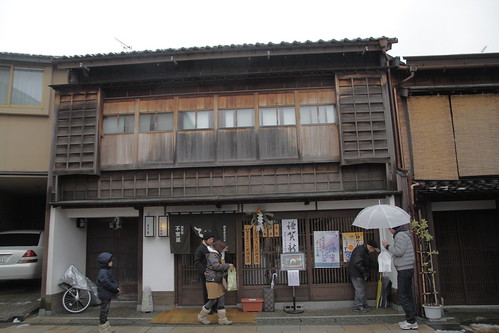
Moments later, I saw a caretaker of an old temple shoveling snow at its entrance, so I stood there in a distance and filmed him.
Noticing me, he asked me to come into the temple and take photos of their famed rotating altar.
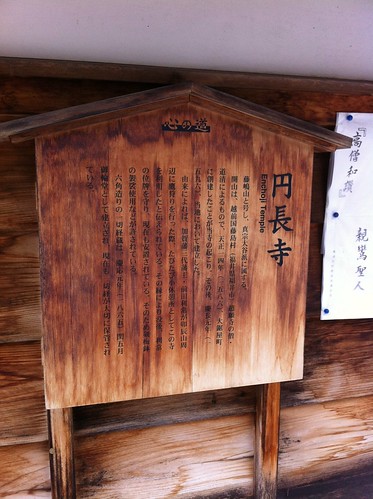
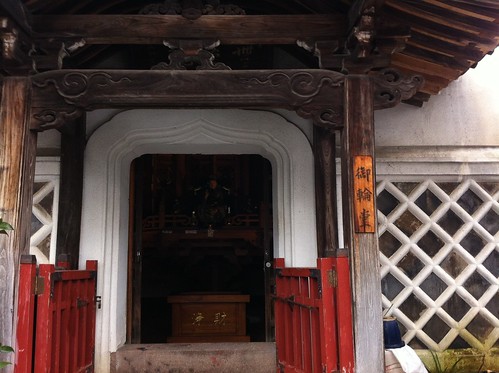
On the altar were Buddhist statues from Japan, India and China. Along with some (very) old scriptures.

As I was doing that, he asked me to try rotate the altar with him, so I did, and it gave off a strange high-pitched melodious sound.
"You will be happy from now on." He said, unexpectedly in English.
Later, he asked me to try to rotate the altar by myself while he tried to film me.
It was more difficult than I imagined.
I politely asked him to demonstrate it to me again. Just so I could catch it on video.
After that he asked whether I wanted to try my hand in snow shoveling on sacred grounds, I thought, why not? Never experienced it before anyway. And it would make a good photo too.
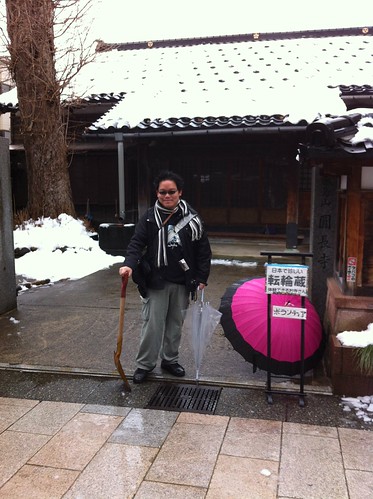
I continued my way through the geisha street.
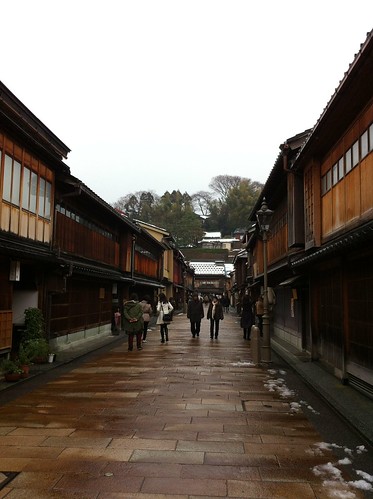
Stopping and examining the famous Shima Tea House, which had been converted into a museum.
I realized that I forgot to withdraw any money, so it was impossible for me to pay for the entrance fee!
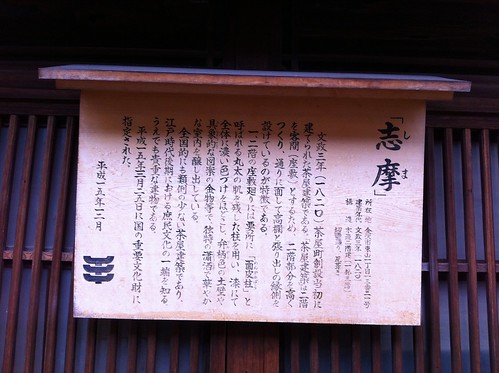

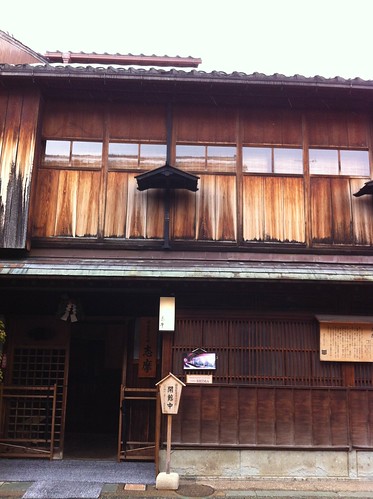
It was already afternoon and I felt rather hungry.
I went to check out a nice-looking traditional restaurant.
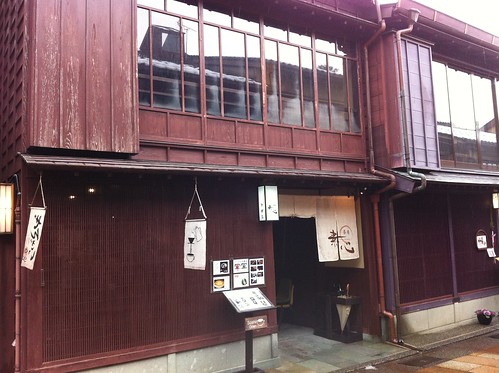
I was a little scandalized that they sold pizza (the ironically named "Original Pizza) too.

Kanazawa is the center of gold leaf production in Japan (used for "gilding"). I went into a few of those Hakuza stores in Higashi Chaya street. Tourists can learn to do their own gold leafing in these stores if they book in advance.
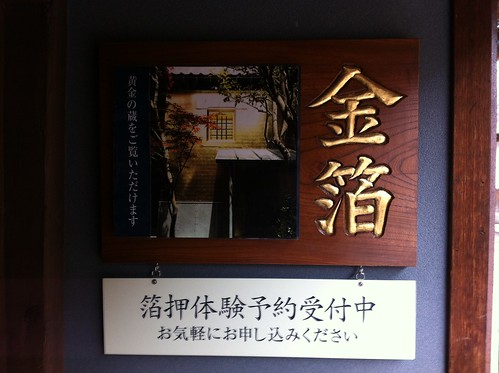
One of the stores was exhibiting the symbol of their pride, the "Ougon no Kura" (Storehouse of Gold). The walls were plastered by gold platinum leaf.
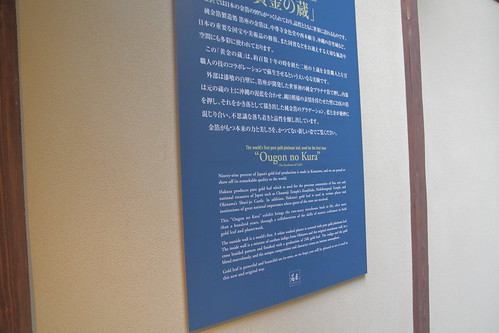
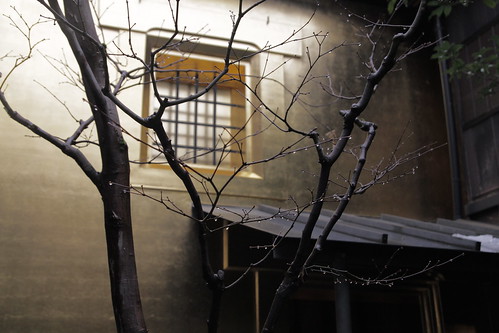
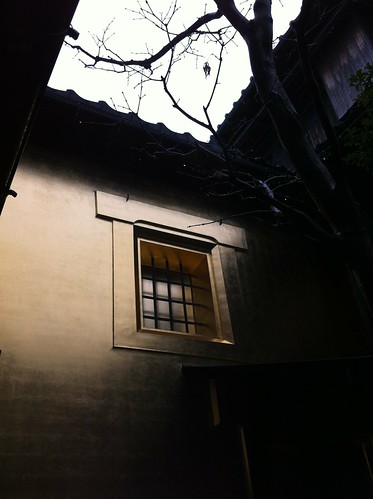
Did you know that oil absorbing tissues are sometimes made with gold leaf paper? I didn't.
After chatting to a nice shop attendant about Kanazawa delicacies (and recommended restaurants, it was 3pm and I had yet to have breakfast nor lunch), she frowned cutely thinking of a recommendation.
"I want to try a Jibuni dish." I said. Referring to the local Kanazawa dish where braised duck is cooked with vegetables.
"Aha!!! Go to Omicho market!" She said excitedly. "I love Jibuni too!"
Thanks but my name is not Jibuni. I thought. Anyway, I checked the location on Google map and realized that the place was only 2km away. The rain had stopped. Instead of hopping into a bus, I decided to walk through the snow. It was more romantic and adventurous.
Stepping out of Higashi Chaya district, and towards the Ume-no-bashi bridge, I paused briefly when I saw a playground covered entirely in snow.
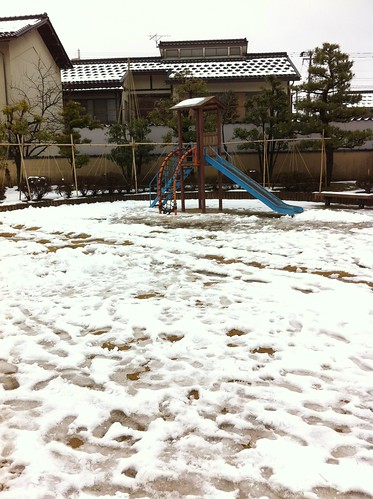
I then resumed my walk by crossing the Ume-no-bashi bridge.

I wasn't too sure whether my Google Map was accurate. I was wandering in the snow, the ground was wet and slippery, and I was absolutely starving, having missed both breakfast and lunch.
There was a photo studio displaying photos of young women in kimono, preparing to celebrate Seijin no Hi (Coming of Age Day) on the 14th of January.
14th of January, of course, would be the day when Tokyo was hit by the heaviest snowfall in decades. Foreshadowing?
After half an hour, I was surprised to find myself standing in front of the Kenrokuen area, along with the Kanazawa castle next to it. For some reason I was back in where I was the day before. I figured I would need to visit the Kanazawa castle before the end of the trip, in case I couldn't see anything else anymore.
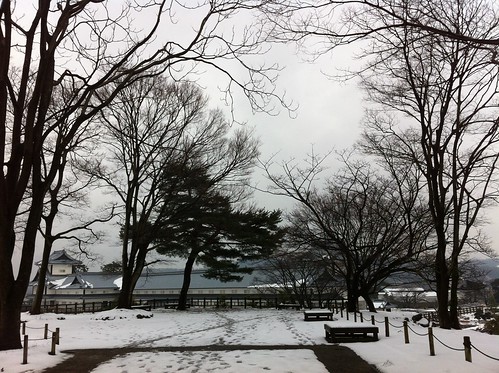
The castle was mostly destroyed by earthquake and fire in 1881, what remained were some gates, including the Ishikawa-mon gate, and a number of buildings, like the Tsurumarusoko Storehouse.

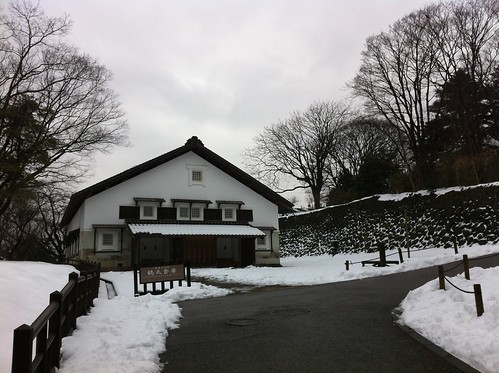
English language tours were offered for free, so I asked for one. The nice tour guide took me around the place explaining about its history and the Maeda family, which had lorded over Kanazawa for 14 generations. It all started with Toshiie Maeda, who had also been immortalized by Dynasty Warrior games.
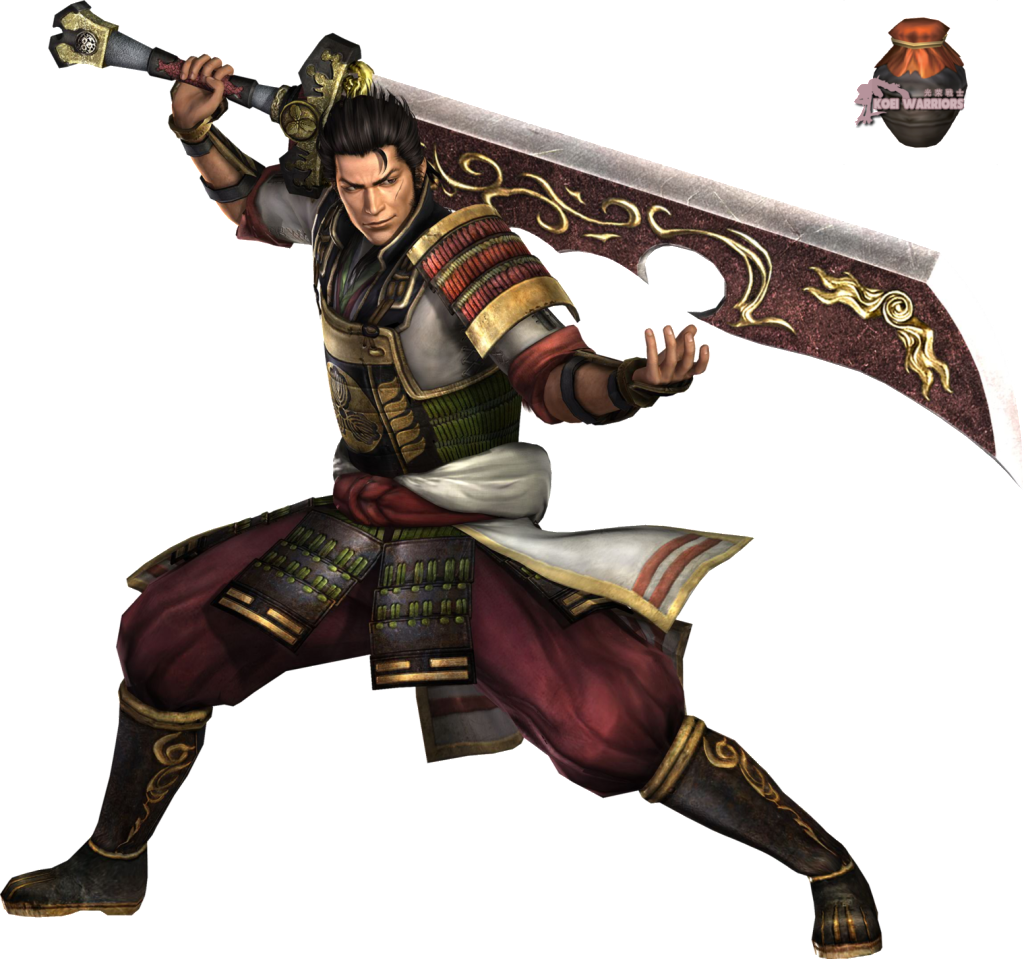
"I know! I saw Maeda Toshiie's statue at Toyama Shrine! So... Who is the 14th Maeda lord in Kanazawa?"
She struggled to think of his name. Looking at Wikipedia, I now realize his name is Maeda Yoshiyasu (1830-1874), the last ruler. In fact, the Maeda family continues until today, the 18th family head is still alive, the youngest heir was born in 1993.
Atsuko Maeda, however, is not related to them.

I thanked her for the tour and had one last photo of myself taken in Kanazawa. The castle would end up being the last place I visited during my trip.
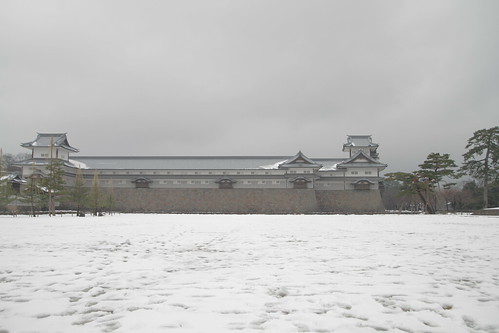


I managed to make my way back to Omichi to have my Jibuni dish.
It wasn't long before night fell upon Kanazawa.
I picked up my luggage again, and went to have some coffee while waiting for my midnight bus to return to Tokyo, just like how I had tea before I left Tokyo.

This time, it was easier to sleep in the bus.
I woke up briefly to check out one of the highway rest places.


Then I fell asleep again.
When I woke up. I was back in Shinjuku. It was 6 in the morning.
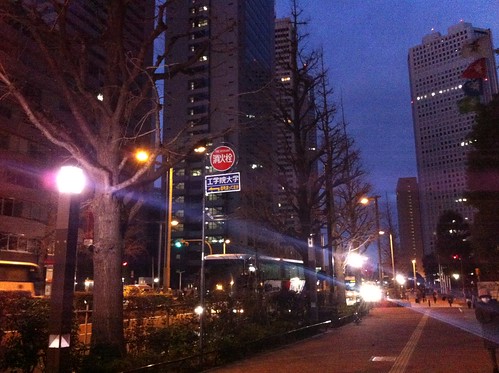
I took the train back to my place, when I stepped out of the station, the sun was rising.
